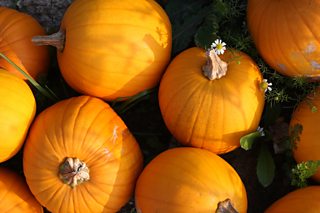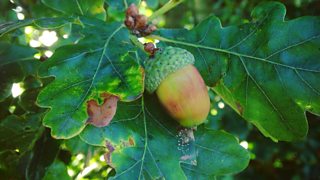Autumn oddities: 22 facts about the 'fall'
Season of mists, mellow fruitfulness, new shoes, dark nights and new TV series... Autumn is rapidly approaching. The Autumn equinox falls on 23 September, when night and day are pretty much exactly the same length – 12 hours – all over the world; equinox means "equal night" in Latin.
There’s a slightly quirky aura to Autumn that perky spring and summer just don’t have; we’re big fans of oddness, so to celebrate the Autumn equinox, here are 22 weird facts about Autumn.

1. Falling out
Women lose more hair in Autumn: they hold on to it in summer to protect their scalps against the midday sun.
2. Take heart
Heart attacks decrease after the Autumn equinox: researchers at the University of Michigan believe it is because we get an extra hour of sleep and are therefore less stressed.
3. Get organised
In Autumn, the black-capped chickadee collects seeds and hides them in hundreds of different spots. This causes the bird’s tiny hippocampus (the part of the brain that deals with spatial awareness and memory) to increase by 30%.
4. Pumpkin heads
Carving vegetables into candlelit faces originated hundreds of years ago in Ireland, but the Irish used turnips or potatoes. When Irish immigrants arrived in America and discovered pumpkins, a new Halloween ritual was born.

5. On the other side of the world
In Australia and New Zealand, Autumn officially begins on 1 March and ends on 31 May.
6. Missing out
Those who live near the equator miss Autumn entirely, because their regions get a consistent amount of sun.
7. Northern Lights
The aurora borealis is visible in Autumn because geomagnetic storms are twice as likely.
8. The word
The word "Autumn" is believed to come from the Etruscan word "autu", meaning change of season.
9. What’s in a name?
Until 1500, Autumn was called "harvest" in Britain.
10. L’automne
Britons only adopted the French word "automne" in the 18th century.
11. Ouch
The male Siberian hamster’s testes swell up to 17 times bigger than normal in Autumn.

12. Sexed up
Levels of testosterone in both men and women are at their highest in Autumn.
13. Making a century
Babies born during the Autumn months are more likely to live to 100 than those born during the rest of the year.
14. Sweet Autumn
Red and purple leaves are caused by the presence of sugars in sap trapped inside leaves.
15. And the winner is...
No film with Autumn in its title has ever won an Oscar; all the other seasons have.
16. Shine on...
The full moon closest to the Autumn equinox is a "harvest moon".
17. Moon Festival
In China, the Autumn equinox is a moon festival. Chinese families eat moon cakes and round foods like watermelons, oranges and green soybeans.

18. Changing face of Autumn
Tree leaf colours have been arriving later across Europe since the 1980s, and in Britain oak leaves are falling a week later than 30 years ago.
19. Ancient fall
Fall is not an exclusively US term. The word "fall"– short for "falling of the leaf" – was used in the 17th century throughout Britain.
20. Conkers bonkers
Only fresh conkers can be used in playing conkers – no holding on to last year’s thirty-er...
21. The longest journey
In Autumn, birds prepare for winter migration. One of the longest migrations is the 11,000 mile journey by the Arctic Tern.
22. "Mists and mellow fruitfulness"
The famous Keats quotation from his poem "To Autumn", was inspired by a walk in the water meadows behind Winchester College – a walk he only took to escape the racket of his landlady’s daughter practising her violin.

Four Seasons - Poetry for the Autumn equinox
-
![]()
Quiz: Keats' or Kate's?
Can you separate your Kate Bush from your John Keats? Let’s get poetical.
-
![]()
Your pictures of the Autumn change
Radio 4 listeners' pictures of Autumn.
-
![]()
Autumn Leaves Quiz
How many trees can you identify from their Autumn leaves?



